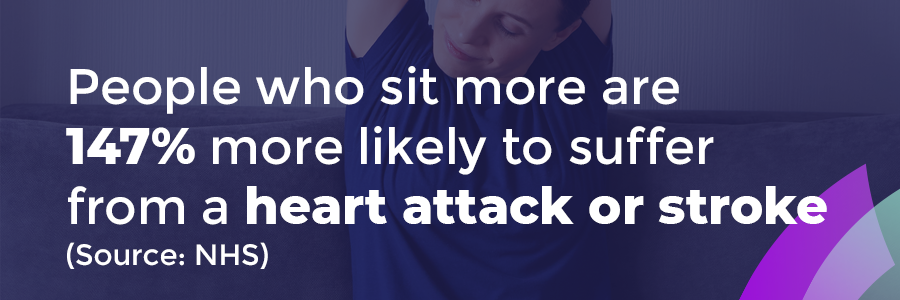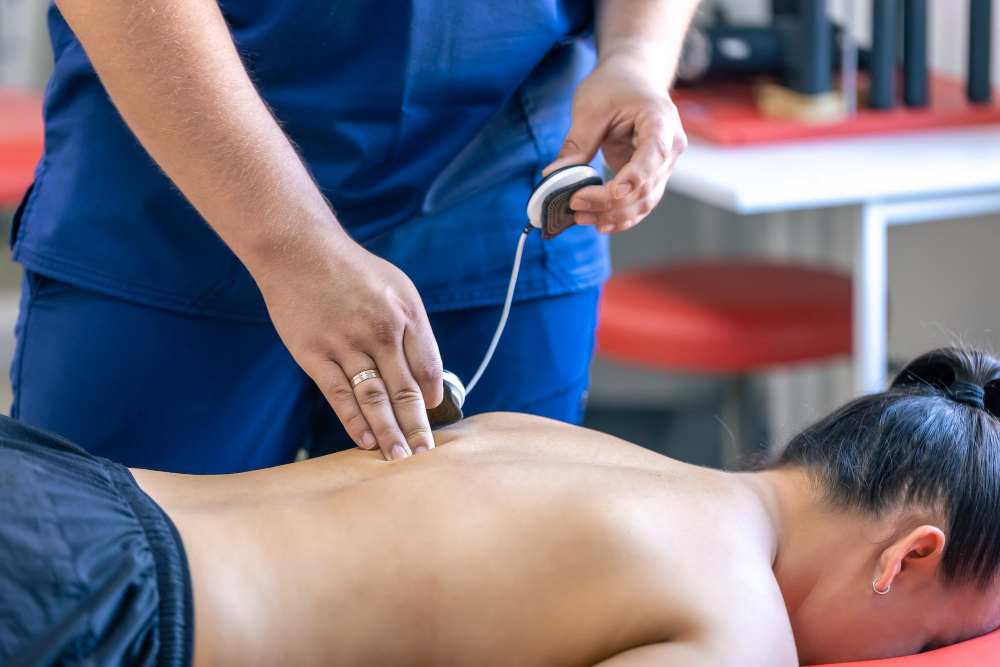Millions of us spend on average 9 hours a day sitting. Either sitting at home on the sofa, commuting on the train to work or in the office all day. A lot of people only end up with around an hour to walk, stand or exercise. Sitting can have both short- and long-term negative effects on your health and body, which can potentially be deadly. Inactivity can produce a host of health problems ranging from obesity, diabetes, cardiovascular disease, and high blood pressure to anxiety, cancer, and atrophied muscles.

Effects on your muscles
When sitting all day, you’re powerful lower body muscles aren’t being used to hold you up. This leads to muscle wastage and weakness. Your body then becomes at risk of injury without those strong leg and glute muscles to stabilise you. As with your lower body muscles, your hips and back will suffer from sitting for prolonged periods. Sitting causes your hip flexor muscles to shorten, which in turn can put excessive strain on your lower back muscles. This situation is compounded if you have bad posture or don’t use an ergonomic chair.
Further to this poor posture while sitting can cause compression on the discs in your spine and can lead to premature degeneration, which may result in chronic pain. As with your legs, hips and lower back, your shoulders and neck will also suffer from prolonged sitting. This is especially true if you’re hunched over looking at a computer screen.
Effects on your health
Spending most of your day sitting, reduces the release of certain molecules which help process the fats and sugars that you eat. This can result in weight gain, especially around the stomach area in men, which is one of the most dangerous areas to store fat. You are also at risk of developing metabolic syndrome, a medical term used to describe a combination of diabetes, high blood pressure and obesity. It increases your potential of coronary heart disease, stroke and other conditions that affect the blood vessels. Sitting for extended periods can be harmful to your heart, potentially leading to cardiovascular disease. In fact, people who sit more are 147% more likely to suffer from a heart attack or stroke.
People who spend more time sitting also have an increased risk of diabetes. One study looked at the effects of bed rest and saw increased insulin resistance, which is a precursor to diabetes.
Sitting for long periods of time can cause blood to pool in the legs. This can lead to varicose veins. Though generally not life threatening themselves, these swollen and visible veins can be unsightly.
In rare cases, they can lead to more serious conditions, like blood clots. Deep vein thrombosis is a type of blood clot that’s most common in the legs. When part of this clot breaks off, it can cut off the flow of blood to other parts of the body such as your lungs, causing a pulmonary embolism. This is a medical emergency that can lead to major complications or even death. Sitting for too long, even on a long trip, can cause DVT.
Tips to keep you moving
Ultimately, we all know that sitting down for extended periods of time cannot be totally avoided. Improving your posture though and trying to stay active throughout the day can prove to be beneficial for your spinal health and general wellbeing.
Below are a few helpful tips to help you get into the routine of moving more and sitting correctly:
- Take the stairs up to your office instead of the lift.
- Have regular breaks every 20-30 minutes by walking to the printer, coffee machine or bathroom to keep your body active.
- Be mindful of the way you sit at work – avoid hunching or slouching at your desk. Sit right back in your chair and make sure your back is well-supported by the chair. If you feel your chair is not supportive enough, then talk to your manager.
- When you are seated at your desk, distribute your weight evenly on your chair and keep your feet flat on the floor. If you can’t sit on your seat properly with your feet flat on the floor, then you may need a foot rest to place your feet on.
- If you are lucky enough to have a height adjustable desk, try alternating frequently between standing and sitting. If your workplace does not offer standing desks, it may be a good idea to request one.
- Take advantage at lunchtimes by going for a brisk walk, as this will help you both physically and mentally!
We hope this article has helped you to understand the dangers of sitting for too long and why we all need to get up and get moving. So once you have finished reading this, get up and go for a little walk.





